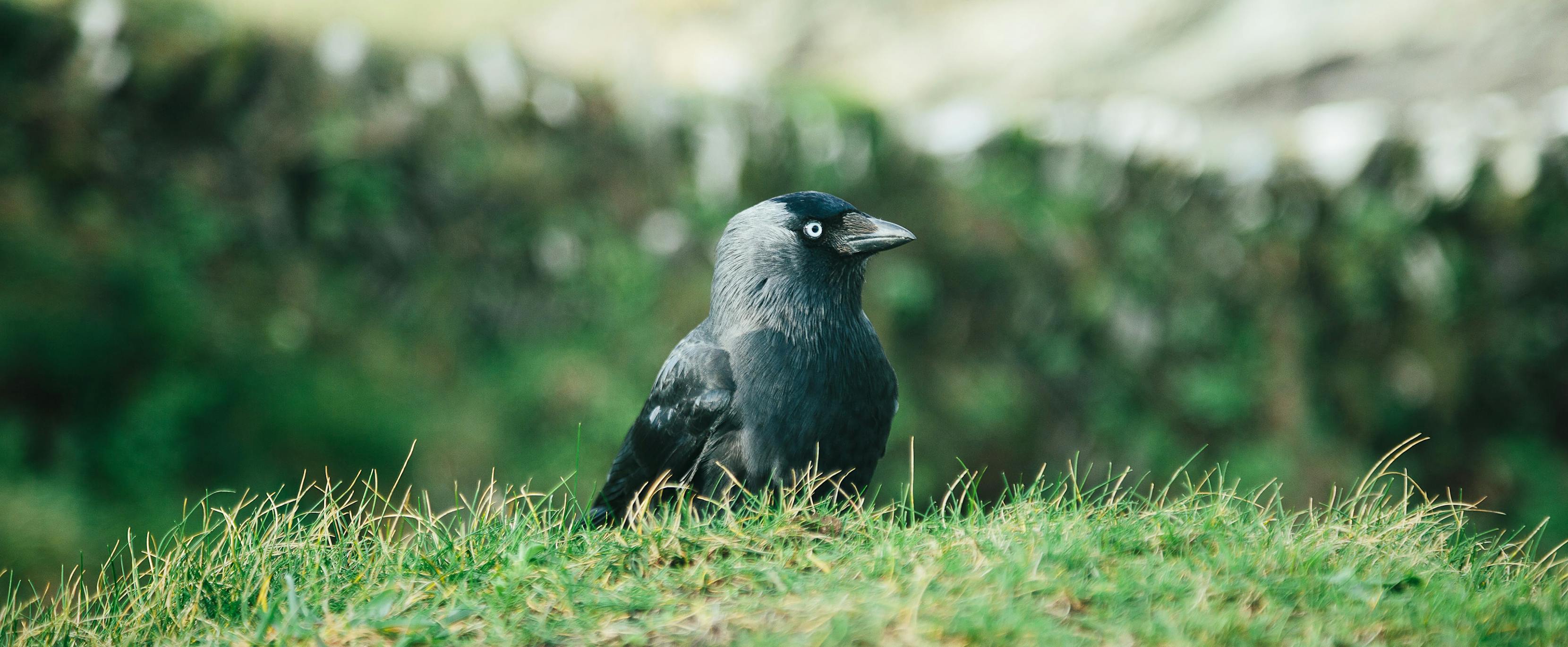
If you wake up in the morning to birdsong, you know that spring is here. Species such as great tits, blackbirds or sparrows often prevent us from sleeping with their singing. One bird species that is heard less and less is the jackdaw. This member of the crow family is classified on the red list as potentially endangered. This makes jackdaws a priority species for conservation measures, which means that it is high time to create new habitats for the species – even in rather unconventional places like, in this case, on pylons of the extra-high-voltage grid. The birds prefer higher sites surrounded by cultivated land. Electricity pylons are therefore very well suited as a place for jackdaws to live. A number of projects to install nesting boxes for jackdaws on high-voltage pylons have recently been implemented.
It is high time to create new habitats for the jackdaws – even in rather unconventional places.
Relocation of a jackdaw colony
A colony of jackdaws has been breeding in a coal tower in Weinfelden for years. The nesting boxes in the old building were specially set up for the animals by the Weinfelden nature and bird conservation society. The association has been observing the jackdaws and reporting on their population for years. Today the colony has about 25 breeding pairs. This makes it the largest colony in the canton of Thurgau. The jackdaws are the last inhabitants of the old coal tower, which is scheduled for demolition in 2023. The Weinfelden nature and bird conservation society therefore looked around for a new home for the jackdaws and, with the support of the Sempach ornithological institute, came across the pylons on the Weinfelden – Winkeln extra-high-voltage line. To give the birds enough time to relocate, ten initial nesting boxes were attached to a pylon in February. At the same time, the old site is gradually being made inaccessible to the birds. Thurgau bird conservation society remains in charge of the maintenance of the nesting boxes on the high-voltage pylons (costs and responsibility). Service providers are contracted by Swissgrid to take care of the maintenance and possible dismantling of the nesting boxes. Both tasks are carried out under the supervision of Swissgrid personnel or persons authorised by Swissgrid. For safety reasons, the bird conservation society may not install, maintain or dismantle the nesting boxes on its own or commission these services from third parties.
A new home in the Rhône Valley
The disappearance of the jackdaw is noticeable in various places in Switzerland. For example, in the Saint-Triphon region in the Rhône Valley. To encourage repopulation, six nesting boxes have been attached to an electricity pylon in this region as well. The «Groupe des Jeunes de Nos Oiseaux» is responsible for the boxes in collaboration with the Sempach ornithological institute, Romande Energie and Swissgrid. Here too, the electricity pylons offer the jackdaws an optimal habitat. This is because they are high enough from the ground and are usually in an environment that provides the jackdaws with sufficient food. If the nesting boxes that have already been installed are colonised by jackdaws, more will be fitted on the pylons.
Nesting boxes for different bird species on electricity pylons are nothing new. When it took over the Swiss extra-high-voltage grid in 2013, Swissgrid also inherited a few nesting boxes – for example for kestrels. These are also a red-listed bird species that is potentially endangered and defined as a priority species for conservation measures. Swissgrid is pleased that its pylons can offer the birds a new home and is open to further enquiries.






